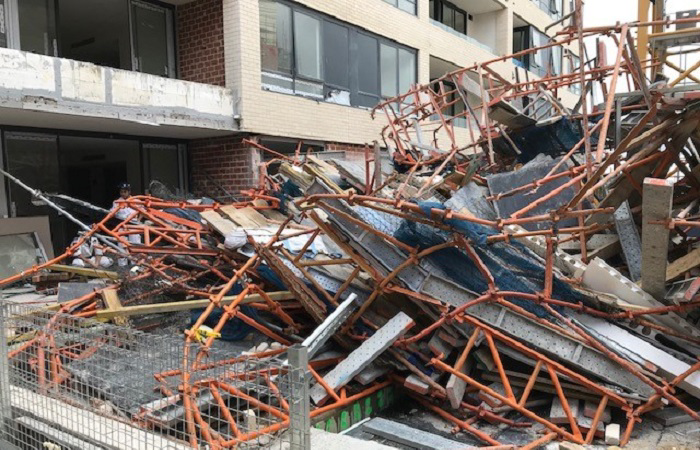Scaffolding is the backbone of many construction sites. But it is only safe when it stays exactly as designed. One of the most overlooked risks on worksites today is scaffold tampering — when someone makes unauthorised changes such as removing guardrails, taking out planks, or altering ties. Even small changes can have catastrophic consequences. Missing rails mean open edges. Missing planks mean unsafe decks. Removed ties mean instability. In short, scaffold tampering turns a carefully engineered structure into a hazard.
Scaffold tampering increases the risk of:
And these are not just theoretical risks. They are happening now.
For example, in Victoria in 2025, a carpenter died after falling from scaffolding where ties and planks had been removed. The builder and scaffolding company were fined a total of AUD $400,000 (WorkSafe Victoria, 2025). In Auckland in 2024, a nine-metre scaffold collapsed onto a busy road because it was erected without the required ties or bracing, leaving the structure effectively free-standing (WorkSafe New Zealand, 2024). Similarly, in Sydney in 2019, the unauthorised removal of scaffold ties contributed to a collapse at Macquarie Park, killing an 18-year-old apprentice; the scaffolding firm was fined AUD $2 million (Australian Broadcasting Corporation [ABC], 2022).
Each of these cases reinforces the same truth: one unauthorised change can risk lives and destroy businesses.
The risks are reflected in regulatory inspections. SafeWork NSW’s Scaff Safe in Construction 2024 campaign revealed that:
These findings show how common scaffold tampering and weak processes remain across worksites.

This is where scaffolding companies in Australia and New Zealand are turning to EZICHEQ.
Scaffold tampering is not just a breach of rules. It is a preventable risk that continues to cost lives across Australia and New Zealand. From missing guardrails and planks to unauthorised adjustments, the consequences can be catastrophic collapse, injury, death, and multi-million-dollar fines. With EZICHEQ, scaffolding businesses can protect themselves and their people. Every handover, inspection, and safety check is backed by tangible evidence — time, date, photos, signatures, and reports. You can prove your scaffolds were built to scope, handed over correctly, and inspected regularly.
Because when it comes to scaffold safety, one unauthorised change should never cost a life.
WorkSafe Victoria. (2025, March 5). $400,000 fines for scaffolding safety failings prior to fatality. WorkSafe Victoria. https://www.worksafe.vic.gov.au/news/2025-03/400000-fines-scaffolding-safety-failings-prior-fatality
From the latest news to expert tips and tricks, our blogs cover a wide range of topics designed to inform, inspire, and empower you and your business.